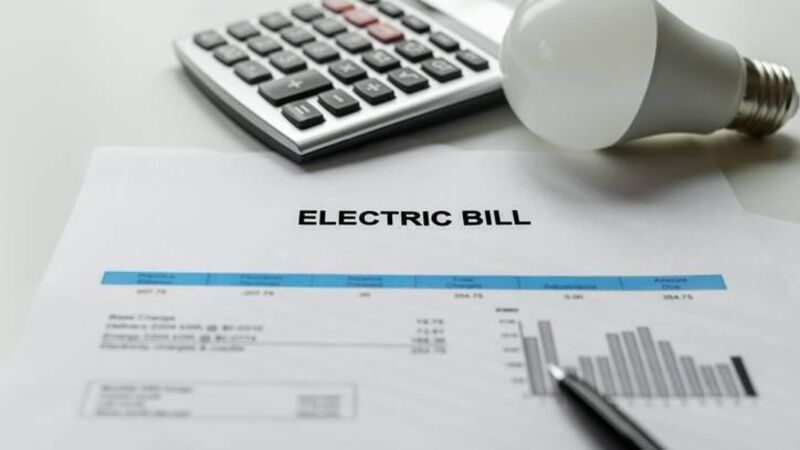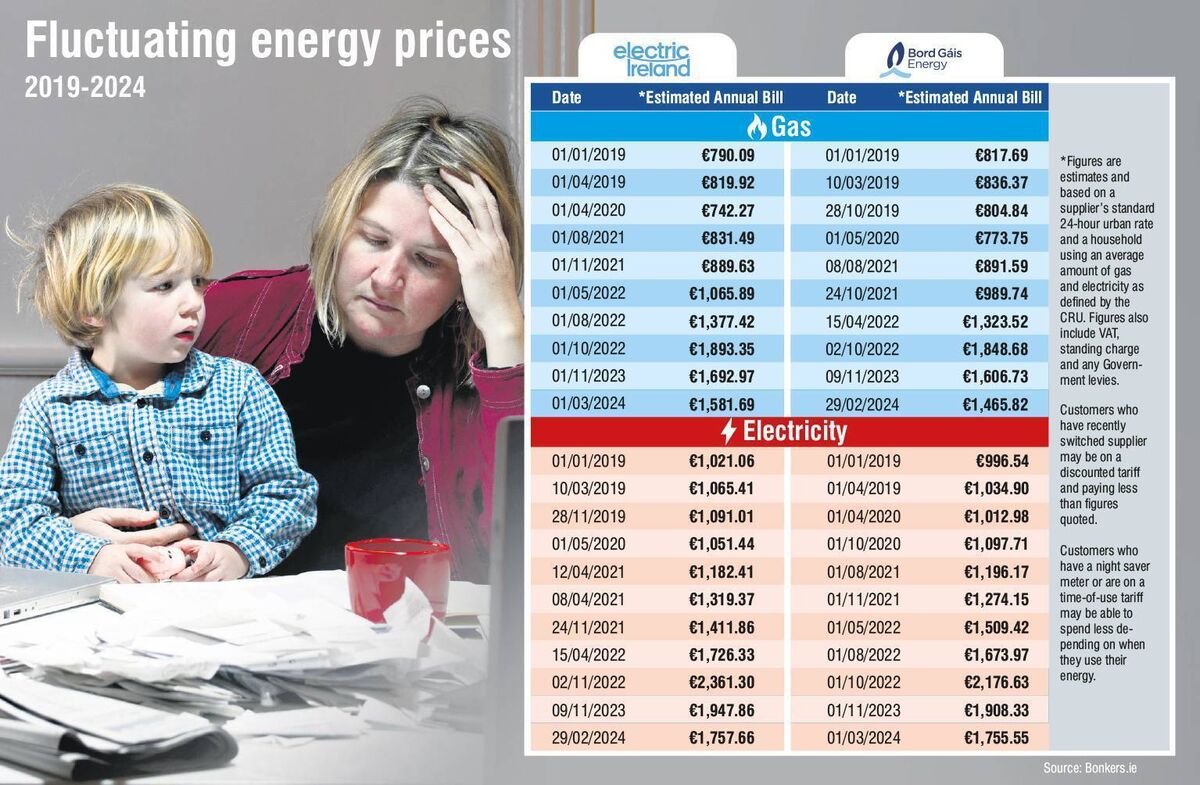'There is finally light at the end of the tunnel' for high energy prices

Irish households are still paying nearly double on energy than they did pre-covid.
There may finally be “light at the end of tunnel” for households in terms of their energy bills in 2024, with further reductions expected later this year, but the Irish public is still paying nearly double than they did pre-covid.
January has been marked with a series of announcements from the big energy firms they would cut their bills, and for many it was their second price cut announcement in recent months.
As recently as Friday, Energia said it would be dropping its prices for its 300,000 customers, cutting about €129 off the average annual electricity bill.
In Bord Gáis Energy’s announcement of a price reduction earlier this month, it claimed dual-fuel customers would save almost €1,000 on their bills annually when its two recent price cuts were put together. It said its “careful hedging strategy” had meant it could make such cuts to customers’ bills.
It came after Electric Ireland had reignited the price war in earnest, announcing its second cut in four months on January 15.
The energy firms had been under sustained pressure to drop their prices and Daragh Cassidy, head of communications at Bonkers.ie, said these recent cuts were to be expected.
“Over the past year or so, wholesale gas and electricity prices have fallen significantly and this drop is now being passed on to consumers, who have seen two rounds of price decreases over the past four months or so,” he said.

“Wholesale prices are falling largely due to a decrease in the price of gas. A mild winter has meant that gas use has been lower than normal in most of Europe and therefore storage levels are high.
“Which is good for easing market jitters and keeping prices under control. And Europe has been receiving lots of shipments of liquified natural gas to replace the Russian piped gas that was banned following its invasion of Ukraine, which then sparked the energy crisis.”
The statistics do bear out the drop in wholesale costs, with the latest Central Statistics Office figures for November 2023 showing the price of electricity 14.1% lower than the same month a year prior.
The difference was even more pronounced earlier in the year. Wholesale electricity prices in August 2023 were fully 72.5% lower than prices in August 2022.
While prices for households shot up, particularly at the beginning of the war in Ukraine, they have not been as quick to drop, even when wholesale prices dropped significantly.
Analysis from Bonkers.ie on the average prices being paid by households shows we are still paying far more to light and heat our homes now than we were before the pandemic, for example.
On January 1, 2019, the average annual electricity bill for an Electric Ireland customer was about €996. This spiked continuously throughout 2022 in particular, reaching a height of €2,176 for the average annual bill in October 2022.
Even coupled with the next reduction set to take effect in March, the average annual electricity bill will be about €1,755.
“Wholesale prices are still close to double normal levels,” Mr Cassidy said. “So, there is a limit to how far prices for consumers can drop for the time being.”
Such is the pressure still on households that the Government rolled out fresh energy credits in Budget 2024, to the tune of €450 across three payments for every household. Even with this support, about one in eight of all households were in arrears on their energy bills last autumn.
This itself was a huge rise compared to 2022. The Society of St Vincent de Paul, meanwhile, said it received a record number of calls last year, as tens of thousands asked for help with their energy bills.
Just before Christmas, Taoiseach Leo Varadkar again told energy companies to begin reducing prices, while Environment Minister Eamon Ryan said he expected household bills to fall “significantly” next year.
“My expectation for the householder is we’re going to see prices fall quite significantly in the first quarter, or first half, of the year,” Mr Ryan said.
He said he did not believe prices would increase again due to increased electricity interconnection with other states.
“Because of all this interconnection with Danish wind, Norwegian hydro, French nuclear is going to keep driving that price down,” Mr Ryan added, meaning household bills would fall as a result.
Mr Cassidy agreed the signs were pointing towards further reductions for households in the coming months.
“However, if wholesale gas and electricity prices remain close to where they currently are, then barring another economic shock of some sort, it's very likely we’ll see a third round of price decreases of around 10% to 20% from all the main suppliers in the second half of the year,” he said.
“[But] that would still leave prices around 40% to 50% above what would, until recently, have been considered normal levels.
“Nevertheless, it does look like there is finally light at the end of the tunnel and the worst of the energy crisis has passed.”












